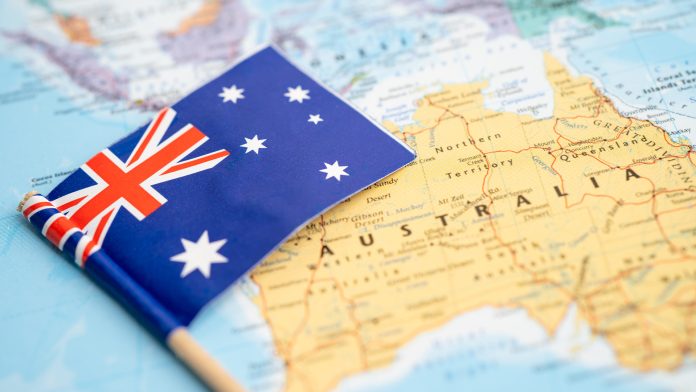The Innovation Platform explores the major steps being taken to transform Australia’s critical minerals sector.
Critical minerals are essential components to the clean energy transition and, as a result, many countries have turned their attentions to increasing their critical minerals supply. Australia is no exception to this, cementing its commitment with the release of its Critical Minerals Strategy 2023-2030.
Australia is home to some of the largest recoverable critical minerals deposits on Earth, including high-quality cobalt, lithium, manganese, rare earth elements, tungsten, and vanadium. With Australia’s push to process more of these minerals, the country is developing new industries which in turn creates jobs and benefits for all Australians and strengthens global supply chains. These efforts all contribute to achieving Australia’s goal of reaching decarbonisation by 2050.
To effectively grow its critical minerals sector, the Australian Government is focusing on:
- Attracting international investments and building international partnerships;
- Growing its critical minerals processing and manufacturing capabilities onshore;
- Getting more value from the country’s natural resources and helping Australia become a renewable energy superpower; and
- Creating Australian jobs and economic opportunities, including for the First Nations and regional communities.
Australia’s critical minerals sector is well placed to seize the opportunities of the clean energy transition due to its rich geological reserves, expertise at extracting minerals, and its track record as a reliable producer and exporter of energy and resources.
Australia’s Critical Minerals Strategy
After extensive public consultation to understand the barriers and opportunities facing the Australian industry and community, the Australian government released the Critical Minerals Strategy in June 2023. The Strategy sets out key priorities across six focus areas which outline how the government will seize its critical minerals opportunity by working with communities, industry, investors, the research and innovation sector, states and territories, and international partners.
The key focus areas are:
- Developing strategically important projects;
- Attracting investment and building international partnerships;
- First Nations engagement and benefit sharing;
- Promoting Australia as a world leader in environmental, social and governance (ESG) performance;
- Unlocking investment in enabling infrastructure and services; and
- Growing a skilled workforce.
A spokesperson for the Department of Industry, Science and Resources told The Innovation Platform: “The Australian Government’s Critical Minerals Strategy 2023-2030 is a whole government plan that provides the policy framework for Australian Government critical minerals policy. It sets a vision and pathway for Australia to grow our critical minerals sector; create jobs and downstream industries; strengthen and diversify global supply chains; and help Australia to become a renewable energy superpower and contribute to global efforts to achieve net zero.”
Financing for critical minerals projects
As part of its drive for growth in the critical minerals sector, the Australian government has implemented a range of financial initiatives to support exploration and development companies in the country. In 2021, the government established the Critical Minerals Facility to provide financing to projects that are aligned with the Critical Minerals Strategy. The Facility has been funded with A$2bn to help projects suffering from gaps in private finance to overcome these gaps and get off the ground. In October 2023, Australia announced a A$2bn expansion in critical minerals financing as part of its effort to move toward clean energy and boost exports, doubling the capacity of the Facility to finance mining and processing projects for materials vital to high-end manufacturing and industry.
Expansion of the critical minerals list
The Australian critical minerals sector has already seen significant progress since the launch of the Strategy. This includes the expansion of the critical minerals list to include nickel, opening up billions of dollars in Commonwealth funding to nickel companies. Companies will have access to financing under the $4bn Critical Minerals Facility and critical-minerals-related grant programs such as the International Partnerships in Critical Minerals Program.
Federal Resources Minister Madeleine King, who made the decision to place nickel on the list, said: “The international nickel price is forecast to stay relatively low through 2024, and likely for several years to come until the surplus of nickel in the market is corrected. In the meantime, this puts further Australian nickel operations at risk. Given impacts to our domestic capacity and noting the broader market developments presently unfolding in the nickel sector, I am fully convinced that we must be proactive in addressing the recent developments, including by adding nickel to the Critical Minerals List.”
Future Made in Australia
Australia has also placed significant focus on attracting investment to the country by creating new jobs and opportunities. Earlier this year, the country announced the Future Made in Australia plan to maximise the economic and industrial benefits of the international move to net zero and secure Australia’s place in a changing global economic and strategic landscape. As part of the 2024-2025 Budget, A$22.7bn will be invested in the plan over a decade to help Australia succeed and remain an indispensable part of the global economy as the world transitions towards net zero.
The Future Made in Australia plan is about attracting and enabling investment, making Australia a renewable energy superpower, value-adding to its resources and strengthening economic security, backing Australian ideas and investing in the people, communities and services that will drive national success.
The Future Made in Australia agenda will ensure Australia can secure much needed investment in critical minerals projects, current and future jobs and opportunities, and make Australia a renewable energy superpower. A significant move in terms of critical minerals is the plan’s proposed implementation of a Critical Minerals Production Tax Incentive (CMPTI). The CMPTI puts forward a short-term and uncapped production tax offset to support investment in critical minerals processing valued at AU$7bn over ten years. The incentive will allow eligible entities to claim 10% of eligible expenditure for processing and refining of any of the 31 Critical Minerals listed on the Department of Industry, Science and Resources’ (DISR) website.
In addition, the plan has allocated A$10.2m to work with states and territories to develop pre-feasibility studies of common-use infrastructure, which promotes a competitive and productive critical minerals sector. It has also committed A$14.3m to work with trade partners to strengthen Australia’s global competitiveness and support benchmarks for trade in high-quality critical minerals.
Please note, this article will also appear in the 19th edition of our quarterly publication.









